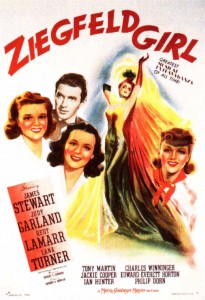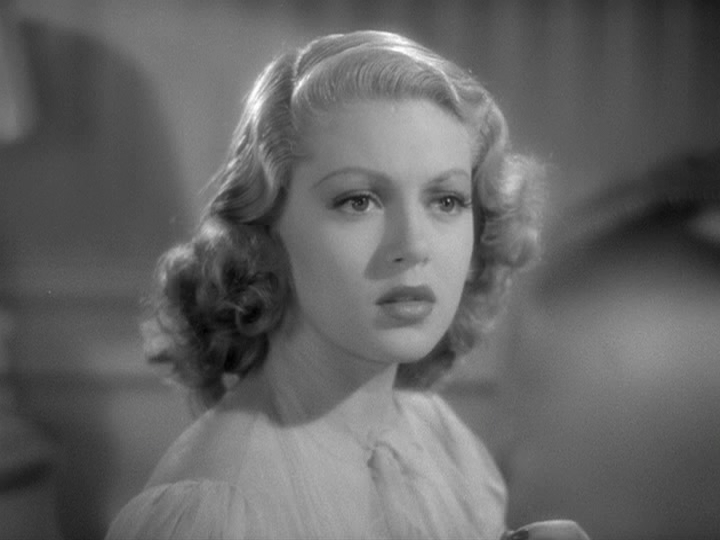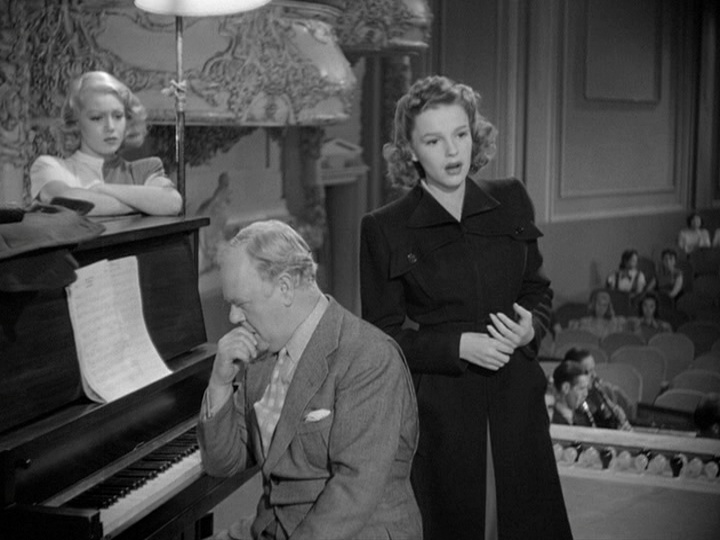Ziegfeld Girl (1941)
“The Follies is life, in one stiff jolt — life running, instead of walking; life speeded up to a mile a minute. But if you’ve got the right stuff, the pace won’t bother you.”
|
Synopsis: |
|
Genres, Themes, Actors, and Directors:
Review: Meanwhile, Garland’s dilemma of old-versus-new performing styles is eerily reminiscent of that in Babes in Arms (1939), down to the presence of Charles Winninger as her resistant vaudevillian father (he was Rooney’s resistant vaudevillian father in Babes… — same difference). Clearly, audiences at the time were receptive to watching and exploring the angst inherent in this profound cultural and generational shift. One wishes Garland’s character were given more prominence, but at least she shines in several musical numbers, most notably her plaintive rendition of “I’m Always Chasing Rainbows”. Lamarr’s role is the least fleshed out and least interesting of them all; without giving too much away, her story seems to primarily serve as a counter-balance to the bad relationship choices consistently made by Turner. Stewart is fine but not particularly remarkable in the top-billed role as Turner’s rejected boyfriend, who turns to bootlegging out of cynical desperation; After making this movie, Stewart left to serve in the war and wouldn’t return to the screen until It’s a Wonderful Life (1946). Redeeming Qualities and Moments: Must See? Links: |



One thought on “Ziegfeld Girl (1941)”
Not a must, though it’s an effective backstage drama.
One might wonder at first why this movie isn’t in color. Shouldn’t it be? Isn’t it glamorous enough to be? We soon realize that, although we do indeed see some extravaganza musical numbers, that’s not primarily what ‘ZG’ is about. ‘ZG’ is about what a glamorous life of fleeting fame can do to you if you’re not careful – and that’s probably best spelled out in black and white. (Anyway, the way the songs are designed, they look fine in stark, geometric settings.)
[Regarding the opening number – ‘You Stepped Out of a Dream’ – I must say I was quite concerned for each girl involved: each one is so decked out in enormous – and enormously bizarre – costumes that I was nervous for every one of them, either going up or down stairs. For me, glamour and the potential for breaking a neck do not mix well.]
I think the movie has an interesting angle, focused as it is on what the girls’ personal lives become once they are Ziegfeld girls. A lot of what happens does seem to ring true – esp. if you are in artistic competition with your partner (or, in Garland’s case, father) or if his/her station in life is suddenly seen as lower than what yours has become.
As for the three running plots, however…I am least interested in Turner’s. I know she became a hot commodity in film, but Turner rarely registers for me on-screen. I don’t tend to buy what she’s selling. That becomes more problematic here since she leans towards being a bitch. Of course, she eventually suffers, and naturally that’s sad…but she’s been so clueless and largely self-serving all along, and we don’t get the chance to gain much sympathy for her in the process. She’s kind of pathetic. (And, yes, the “I’m counting my blessings!” bit rings of camp.)
Garland (who apparently worried that she wasn’t as glamorous as someone like Turner; she needn’t have worried) is fine with what she’s given to do. Generally, it’s not standout stuff (material-wise) but she’s pleasant to watch – and listen to! – throughout. She comes off like a real pro.
For me, Lamarr actually comes off best. Having just revisited ‘Ecstasy’, I can see here where she has grown in potential. I felt for her character and she appeared very real and grounded to me. Her character sizes up what the business is and is realistic about it.
Ziegfeld girls are what morphed into Hefner’s Playboy bunnies: flavors of the month. You had a ‘moment’ to shine and, if it ran away with you…look out! I was put in mind of what happened to women like Lamarr, Hayworth, Monroe, etc. in real life: multiple marriages, unsteady futures, the apparent inability to separate the fabrication from real life. When we watch movies – especially those which put glamour front and center – we’re meant to just enjoy the two-hour escape of it all. ‘Ziegfeld Girl’ goes one step beyond that. It’s kind of a cautionary tale in a way; reminding that fabrication is simply that. And that real life is something else altogether, something to do with real human beings, something that the fantasy of glamour has no connection with.